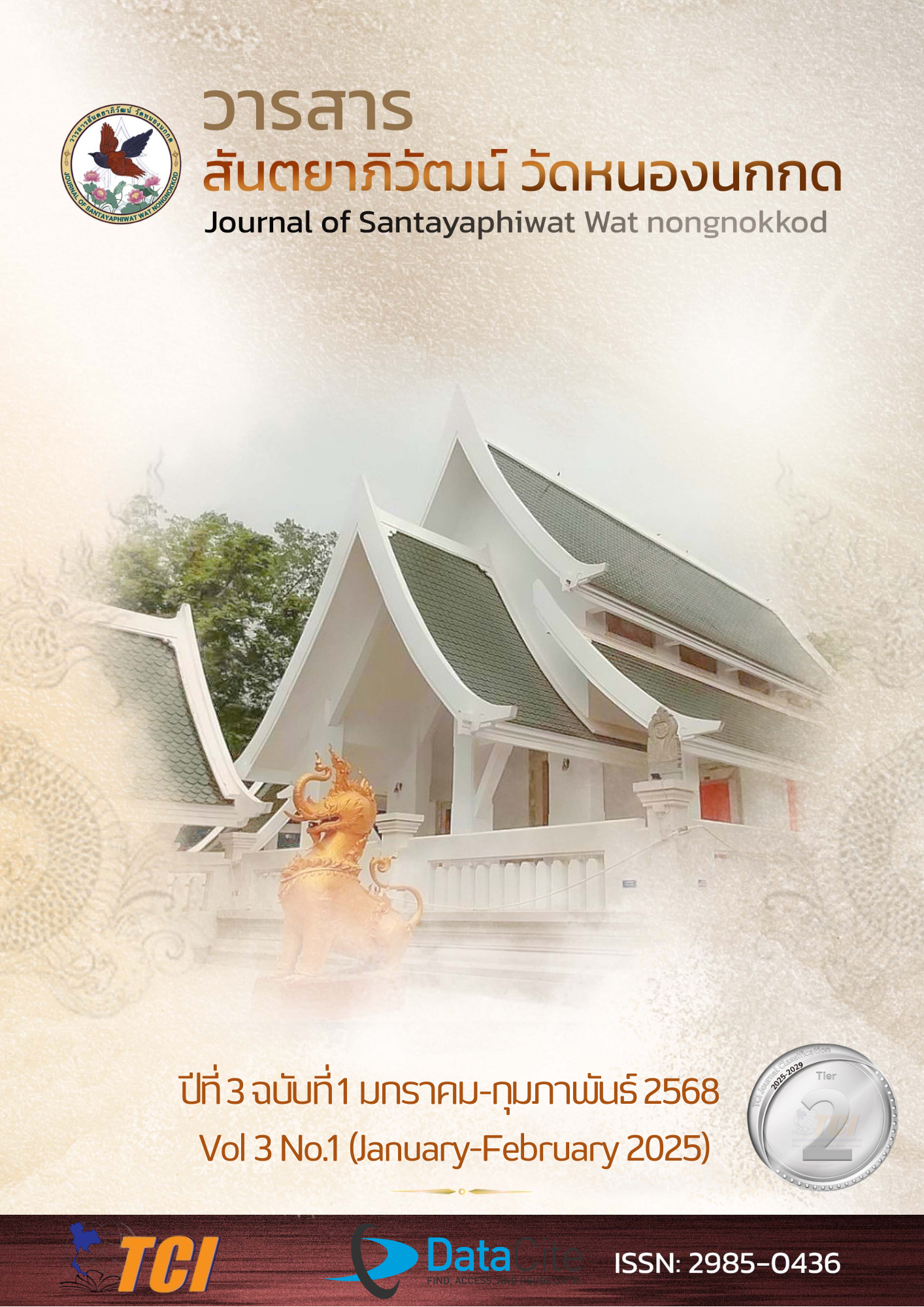USING ARTIFICIAL INTELLIGENCE (AI) TECHNOLOGY (CHAT GPT) TO PROMOTE ART TEACHING SKILLS
Keywords:
Artificial Intelligence Technology (AI), Teaching skillsAbstract
This academic article examines the implementation and potential applications of artificial intelligence (AI) technology, specifically Chat GPT, in enhancing art education pedagogical practices in Thailand. Through a systematic review and synthesis of relevant academic literature and scholarly documents, the findings indicate that AI technology demonstrates significant potential to revolutionize educational methodologies in multiple dimensions. These dimensions encompass the enhancement of creative thinking processes, personalization of instructional content, and development of adaptive assessment materials with graduated difficulty levels. Moreover, AI systems effectively facilitate student performance monitoring, assessment analytics, and reduction of administrative tasks, thereby optimizing instructional efficiency. Nevertheless, the integration of AI technology into art education presents several critical challenges, including content validity assurance, preservation of artistic pedagogical integrity, adherence to ethical and intellectual property guidelines, safeguarding of student data privacy, and the imperative for continuous professional development of educators. Consequently, this research contributes to establishing comprehensive guidelines for sustainable AI integration in art education, ultimately advancing the quality of art education in the Thai educational context.
References
ขวัญใจ ทวนดำ, & พระสมพร นามอินทร์. (2023). ปัญญาประดิษฐ์กับการสอนวิชาศิลปะ. วารสารคอมพิวเตอร์และเทคโนโลยีสร้างสรรค์, 1(3), 33-39.
จตุพร แทนเถื่อน, & ธนารักษ์ สารเถื่อนแก้ว. (2023). การใช้เทคโนโลยีปัญญาประดิษฐ์ (AI) เพื่อพัฒนาทักษะการอ่านของผู้เรียน. Journal of Applied Education, 1(4), 23-28.
ธนารักษ์ สารเถื่อนแก้ว. (2024). การใช้เทคโนโลยีปัญญาประดิษฐ์ AI (Chat GPT) เพื่อส่งเสริมทักษะการเขียน. Journal of Applied Education, 2(2), 45-58.
พระสมพร นามอินทร์, & ชาตรี สุขสบาย. (2024). ปัญญาประดิษฐ์ที่มีผลกระทบต่อการออกแบบการจัดการศึกษา. วารสารปราชญ์ประชาคม, 2(4), ุ60-71
มานน เซียวประจวบ, ปิญะธิดา อมรภิญโญ, & นิษา ศักดิ์ชูวงษ์. (2024). โมเดลการใช้งานเทคโนโลยีปัญญาประดิษฐ์เชิงสร้างสรรค์ของผู้ปฏิบัติงานฐานความรู้. วารสารวิทยาการจัดการ มหาวิทยาลัยราชภัฏอุดรธานี, 6(4), 1-16.
Alvarez, I., Alarcon, R., & Nussbaum, M. (2020). How the use of ICT can contribute to a sustainable learning environment. Journal of Computer Assisted Learning, 36(5), 618-633.
Baker, R. S., & Inventado, P. S. (2014). Educational data mining and learning analytics. In Learning analytics (pp. 61-75). Springer, New York, NY.
Boonlue, S. (2024). แนวทางการใช้ปัญญาประดิษฐ์รังสรรค์สำหรับการศึกษาและวิจัย. Journal of Industrial Education, 23(2), B1-B12.
Chen, X., Xie, H., & Zou, D. (2020). Intelligent learning environment and learning analytics: A systematic literature review. International Journal of Artificial Intelligence in Education, 30(1), 93-128.
Garcia, R., & Martinez, L. (2021). Balancing technology and humanity in art education. International Journal of Art Education, 8(2), 67-82. https://doi.org/10.1080/ijae.2021.1234567
Holmes, W., Bialik, M., & Fadel, C. (2019). Artificial intelligence in education: Promises and implications for teaching and learning. Center for Curriculum Redesign.
Lee, S., & Park, J. (2023). Enhancing creativity in art education through AI: Opportunities and challenges. Asia Pacific Journal of Education, 43(1), 112-128. https://doi.org/10.1080/apje.2023.9876543
Luckin, R., Holmes, W., Griffiths, M., & Forcier, L. B. (2016). Intelligence unleashed: An argument for AI in education. Pearson Education.
Polsamak, C. (2021). การใช้เทคโนโลยีปัญญาประดิษฐ์ในการจำแนกเป้าหมายเพื่อนำเข้าระบบควบคุมบังคับบัญชา กรณีศึกษาชุดต้นแบบทางยุทธวิธี. รัฏฐาภิรักษ์, 63(2).
Woolf, B. P., Lane, H. C., Chaudhri, V. K., & Kolodner, J. L. (2013). AI grand challenges for education. AI Magazine, 34(4), 66-84.
Zawacki-Richter, O., Marín, V. I., Bond, M., & Gouverneur, F. (2019). Systematic review of research on artificial intelligence applications in higher education–where are the educators?. International Journal of Educational Technology in Higher Education, 16(1), 1-27.








